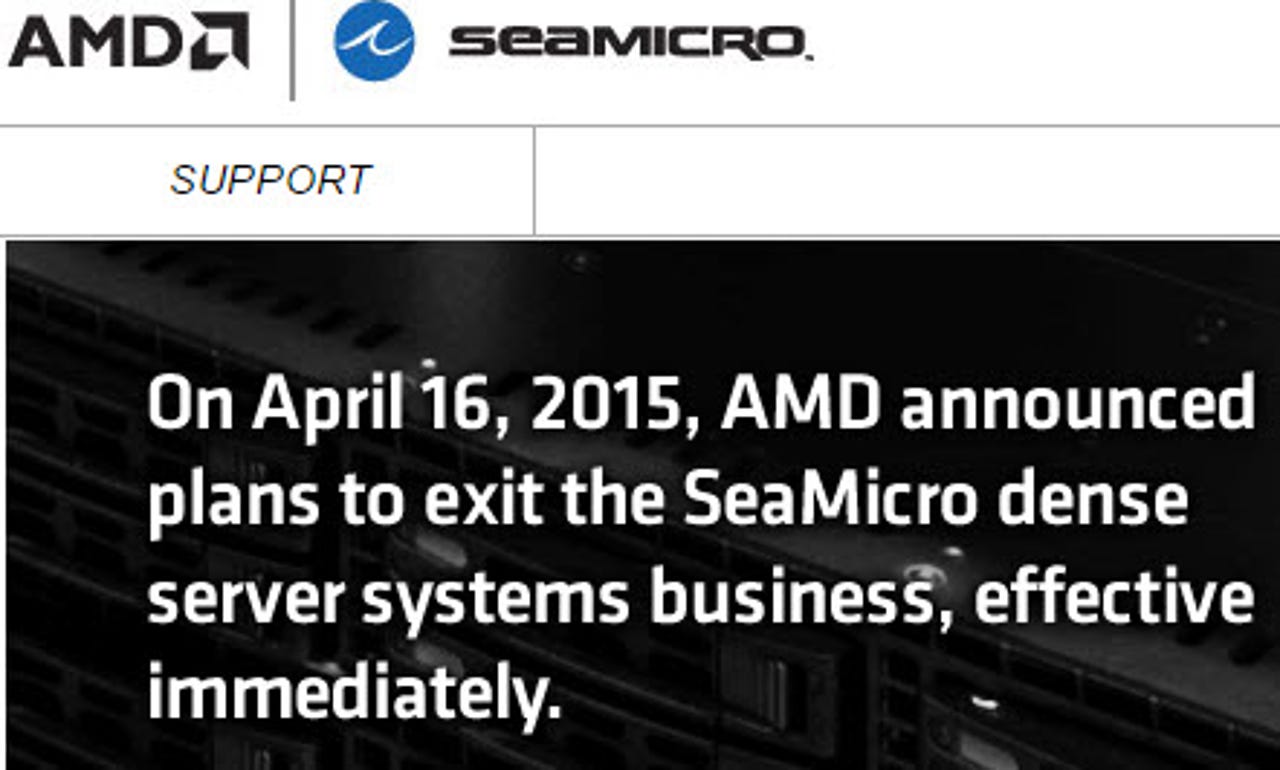AMD gives up the data center without a fight

Two years ago AMD made a surprise move to get into the cutting edge of data center technology when it acquired SeaMicro, an innovator in the evolution of dense server systems for the data center. But 25 months later, AMD unceremoniously dumped the SeaMicro business with a curt "We're done" announcement on April 16, 2015.

When AMD swooped in and stole industry pioneer SeaMicro out from under Intel's umbrella (its original dense systems were built on Intel Atom CPUs) it looked like it was heading in the right direction. By Q1 2014, AMD was back in the black, and while the $334 million spent to acquire SeaMicro is a drop in the bucket in these days of multi-billion dollar acquisitions it seemed that AMD had placed itself directly in line with what would be a hot technology in data centers for the foreseeable future. The SeaMicro acquisition also gave AMD a leg up in the market for the next generation of 64-bit ARM processors, thought to be the leading candidate for future dense server solutions for the data center.
Featured
With Intel publicly announcing, multiple times, that the biggest revenue growth was in data center products it looked like AMD had made a smart move, with the chance to leverage SeaMicro and ARM technologies to become a data center player, something its x86 CPU business had been unable to do. But AMD never followed through on the promise of the 64-bit ARM CPUs or the potential of SeaMicro's Freedom Fabric, the underlying connectivity technology for the dense server products.
The abrupt abandonment of SeaMicro isn't going to make AMD more profitable, or make it a better technology company. Given the nature of the business it looks more like a sign that AMD has given up trying to compete with Intel for specialty markets like the data center. Couple that with the announcements that it has made relative to its next generation GPUs not appearing any sooner than Q3 of 2015, and it would seem that the GPU battle is going to Nvidia.
There was a time when AMD's mere existence was keeping its competitors on its toes. But it is beginning to look like AMD will become yet another "almost" in the history of the computer technology business.